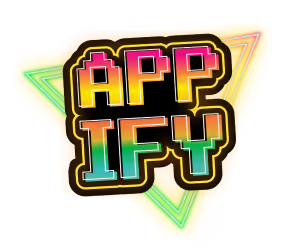The Rise of Emotionally Intelligent Apps: How Real-Time Mood Sharing is Transforming Digital Communication
In the ever-evolving landscape of custom app development and digital transformation, there's a noticeable shift toward creating more intuitive, emotionally intelligent digital experiences. One of the latest innovations making waves in this space is Kuky, a unique app that focuses on real-time mood sharing—a simple but profound concept that resonates deeply in our hyper-connected world. As leaders in AI-powered app development in Australia, we're exploring why this approach represents a significant advancement in fostering genuine human connections through technology.
How Artificial Intelligence is Enhancing Emotional Communication in Apps
The digital communication era brought with it countless ways to express ourselves—text, emojis, gifs, voice messages, video calls. Yet, these tools often fail to capture the complexity of human emotions effectively in real-time. This gap between digital interactions and authentic emotional exchange is where emotionally intelligent applications are making their mark. As the tech industry continues seeking meaningful solutions for genuine engagement, AI-driven emotional intelligence might be setting the precedent for the future of mobile app development.
Recent research from Gartner suggests that by 2024, AI identification of emotions will influence more than half of the online advertisements you see. This trend is rapidly expanding beyond marketing into everyday communication tools.
The Technology Behind Real-Time Mood Sharing Apps
AI-Powered Emotional Recognition
Modern mood-sharing applications are built on sophisticated foundations of artificial intelligence and machine learning, using these technologies to interpret users' emotional cues. This integration of advanced AI technology demonstrates the potential of machine learning in creating more personalized and emotionally aware digital experiences.
The most effective mood-sharing platforms feature:
User-Centered Interface Design
The interface for these emotionally intelligent apps is designed with accessibility in mind, ensuring individuals across all age groups and technical proficiency levels can engage effortlessly. By creating intuitive user experiences, developers are lowering barriers to entry, inviting more users to benefit from real-time emotional connectivity.
Business Applications of Emotionally Intelligent Communication
In professional settings, understanding colleagues' emotional states can significantly enhance teamwork and collaboration. Imagine a work environment where team members are attuned to each other's emotional states, leading to more harmonious interactions and improved productivity.
Our custom application projects have demonstrated that emotionally intelligent features can transform:
According to a McKinsey report, companies implementing emotion AI in customer interactions have seen satisfaction scores improve by up to 30 percent.
The Future of App Development: Emotional Intelligence as Standard
Transforming Digital Communication
As emotionally intelligent apps become more sophisticated, they will reshape how we communicate both personally and professionally. The potential applications are vast, from enhancing mental health support systems to revolutionizing customer experiences with empathetic AI-driven interactions.
Privacy and Ethical Considerations
The challenge for future app development will lie in ensuring these tools remain ethically designed, with privacy and user autonomy at the forefront. As our development studio works on similar technologies, we prioritize transparent data practices and user consent in all emotional intelligence implementations.
Why Australian Businesses Should Embrace Emotionally Intelligent Apps
For Australian organizations looking to stay competitive in the digital transformation race, incorporating emotional intelligence into their digital strategy offers several advantages:
Implementing Emotional Intelligence in Your Next App Project
If you're considering developing an app with emotional intelligence capabilities, here are key considerations:
Our AI-powered automation solutions can help Australian businesses integrate these capabilities seamlessly into existing digital ecosystems.
Conclusion
The emergence of emotionally intelligent applications offers a glimpse into the future of app development, where emotional intelligence fosters deeper, more genuine human connections. As digital transformation continues to accelerate across Australian industries, we expect to see emotional AI become a standard feature in next-generation applications.
At our agency, we're excited to be part of a movement that prioritizes human-centric technology. We invite businesses and organizations to explore how emotionally intelligent features can transform their digital presence and user experiences.
.png)
.png)
.png)
.avif)
.png)

.png)






